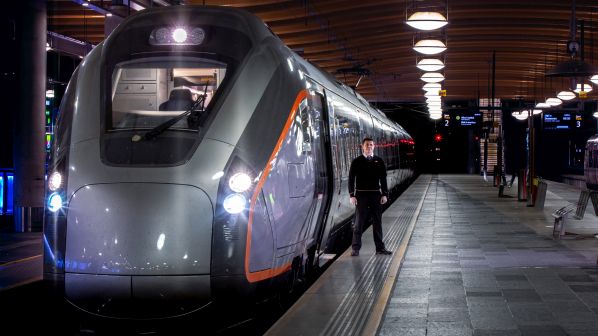NORWEGIAN operator Flytoget has withdrawn its entire fleet of CAF Oaris EMUs following the discovery of a crack in the chassis of one of the trains less than a month after they entered traffic.
The trains were launched on June 5, but on June 24 Flytoget confirmed that all eight four-car class 78 trains had been withdrawn from traffic following discovery of the issue during scheduled maintenance. The operator says it has not observed the error before.
“We have been very much looking forward to welcoming the passengers on board,” the operator says in a statement. “Unfortunately, it will take longer than planned. Safety is our most important priority, and during the first ordinary maintenance check, a fault was discovered which is now being rectified. This has no practical consequences for travellers.
“CAF’s engineers are now working to correct the error. It is too early to say how extensive the error is. We are in close dialogue with CAF to solve the problems as quickly as possible. At present, it is unfortunately not possible to say when the train sets will be put back into service.
“At the moment we are not going to comment on this matter,” CAF spokesman, Mr Inaki Escrig, told IRJ.
CAF Civity class 195 DMUs and class 331 EMUs used in Britain by Northern also suffered from cracks earlier this year, with more than 20 trains from a fleet of 101 withdrawn from traffic due to the fault. In addition, CAF Urbos 3 LRVs operated by West Midlands Metro have suffered from cracks with one LRV sent back to Zaragoza last year for assessment, sources have told IRJ.
The eight four-car class 78s are the fastest trains to operate in Norway. The 245km/h 15kV 16.7hz ac trains were delivered in March 2019 and entered service in June this year, more than a year later than planned. They were ordered in a NKr 1.3bn ($US 160m) deal in March 2015, with testing beginning at the Velim test centre in May 2018.
The trains were bought to run alongside the operator’s existing 16 class 71 three-car EMU fleet with the aim of boosting capacity to Oslo airport by 50%. However, this plan is in doubt following the decline in passenger numbers caused by the pandemic.

